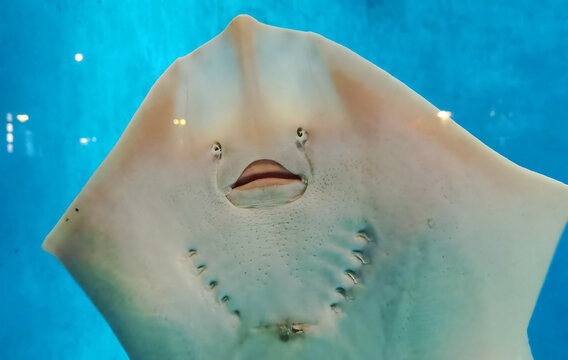Introduction
Mantarraya, often referred to as “gentle giants” of the ocean, are among the most fascinating creatures in marine life. These majestic beings capture the imagination of divers and marine biologists alike. Understanding manta rays is crucial not only for marine enthusiasts but also for the conservation of these incredible animals. This article explores the world of manta rays, covering their biology, ecology, and significance.
What is a Manta Ray?
A manta ray is a type of large, flat-bodied ray belonging to the genus Manta. They are classified under the family Mobulidae and are known for their impressive size and unique body structure. Manta rays are distinguished by their large, triangular pectoral fins, horn-shaped cephalic fins, and wide, flat bodies.
Types of Manta Rays
There are two primary species of manta rays:
- Reef Manta Rays (Manta alfredi): Found in coastal regions and around coral reefs.
- Giant Oceanic Manta Rays (Manta birostris): The larger of the two, found in open ocean waters.
Physical Characteristics
Manta rays are renowned for their large size, with wingspans reaching up to 7 meters (23 feet) and weights up to 2,000 kilograms (4,400 pounds). Their bodies are covered in a smooth, leathery skin, and they possess a unique pattern of spots and markings on their undersides, which can be used for individual identification.
Habitat and Distribution
Manta rays inhabit tropical, subtropical, and temperate waters worldwide. Reef manta rays are typically found near coral reefs and coastal areas, while giant oceanic manta rays prefer the open ocean. They are commonly seen in regions like the Indo-Pacific, the Caribbean, and parts of the Atlantic Ocean.
Diet and Feeding Habits
Manta rays are filter feeders, primarily consuming plankton, small fish, and crustaceans. They feed by swimming with their mouths open, allowing water to flow over their gill rakers, which trap the tiny food particles. This feeding behavior is often observed in a circular pattern known as “barrel rolling.”
Reproduction and Life Cycle
Manta rays have a slow reproductive rate, with females giving birth to a single pup every two to three years. Mating behaviors include courtship displays where males follow females in elaborate patterns. After mating, females give birth to live young, which are miniature versions of the adults.
Behavior and Social Structure
Manta rays are known for their gentle nature and social behaviors. They can often be seen alone or in small groups, known as schools. Their interactions with other marine species include symbiotic relationships with cleaner fish, which remove parasites from their bodies.
Ecological Importance
Manta rays play a vital role in marine ecosystems by maintaining plankton populations and contributing to the overall health of coral reefs. Their presence in the ocean is a key indicator of marine biodiversity and ecosystem stability.
Conservation Status
Despite their ecological importance, manta rays face numerous threats, including overfishing, habitat destruction, and bycatch in commercial fisheries. Both species of manta rays are listed as vulnerable on the IUCN Red List. Conservation efforts focus on habitat protection, fishing regulations, and public awareness campaigns.
Manta Rays and Humans
Manta rays hold significant cultural value in many coastal communities and are a major draw for eco-tourism. Diving with manta rays is a popular activity, providing economic benefits to local communities while promoting conservation awareness.
Research and Study
Ongoing research on manta rays includes studies on their behavior, migration patterns, and genetic diversity. Key discoveries have highlighted their intelligence, complex social structures, and the impacts of environmental changes on their populations.
Myths and Misconceptions
There are several myths about manta rays, such as the belief that they are dangerous to humans. In reality, manta rays are harmless and pose no threat. Scientific facts help debunk these misconceptions, promoting a better understanding of these gentle creatures.
How to Observe Manta Rays Safely
For those interested in observing manta rays, it is important to follow guidelines that ensure both human and animal safety. This includes maintaining a respectful distance, avoiding sudden movements, and refraining from touching or disturbing the animals.
Future Prospects
The future of manta rays depends on continued conservation efforts and scientific research. Potential changes in ocean conditions, such as climate change and pollution, could impact manta ray populations. Future research aims to develop strategies to mitigate these effects and protect manta rays for generations to come.
Conclusion
Manta rays are extraordinary creatures that contribute significantly to marine ecosystems and human cultures. Their conservation is crucial for maintaining ocean health and biodiversity. By understanding and protecting manta rays, we ensure that these majestic giants continue to grace our oceans.
FAQs
Are manta rays dangerous to humans? No, manta rays are not dangerous to humans. They are gentle and non-aggressive creatures.
How can I help in manta ray conservation? You can help by supporting organizations dedicated to manta ray conservation, reducing plastic use, and promoting sustainable fishing practices.
What is the lifespan of a manta ray? Manta rays can live up to 50 years in the wild.
Where is the best place to see manta rays? Some of the best places to see manta rays include the Maldives, Hawaii, and the Great Barrier Reef.
Do manta rays have any natural predators? Yes, manta rays have a few natural predators, including large sharks and orcas.

